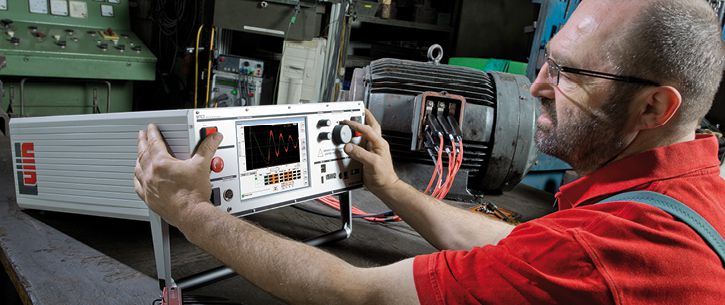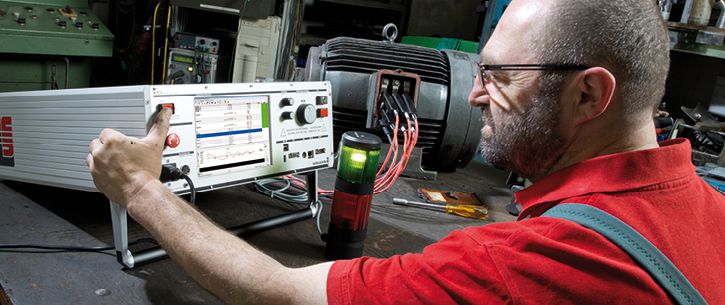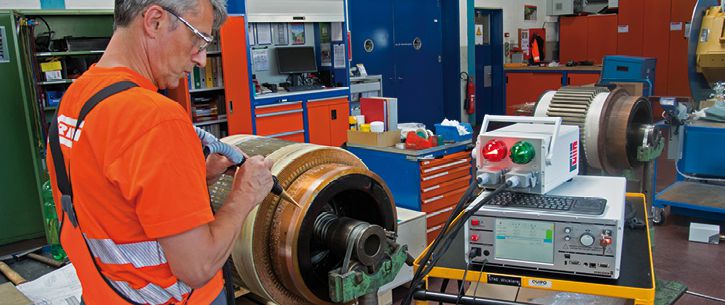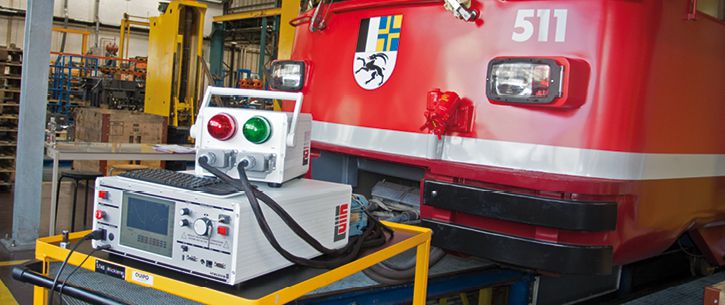Test Method
Surge test
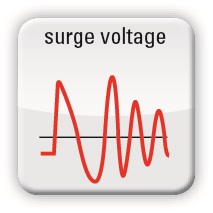
The surge voltage test is ideal for detecting turn-to-turn faults and insulation faults within a winding. No other test method is able to supply test results on the insulation of a winding system of a similar quality.
This test can also be extended by a partial-discharge test.
Especially due to the automatic evaluation methods of the test results, this tester is ideally suited for testing within automatic or manual production lines.
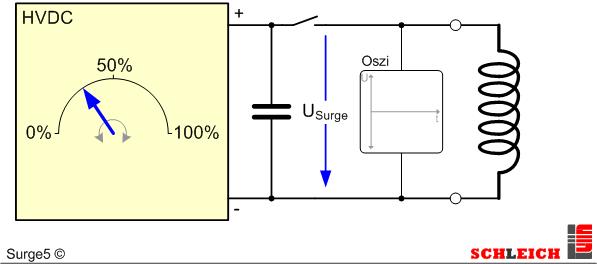
The surge impulse is generated by a very fast parallel switching of a loaded capacitor to the winding to be tested.
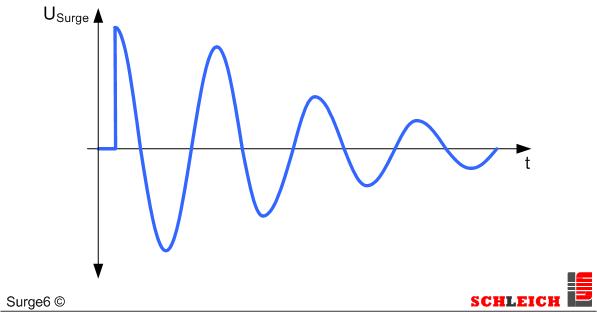
After connecting the capacitor the stored energy is discharged into the inductivity and then back into the capacitor, etc. Attenuation losses, etc. result in a sinusoidal reduced sympathetic oscillation. It has a frequency that is characteristic for the inductivity to be tested and a typical amplitude characteristic.

The matrix allows to perform the tests at any connection points of the stator.
Which testers does SCHLEICH supply?
- combination testers (combination with additional tests i.e. resistance, high-voltage etc.)
- manual tests
- fully automated testing
- matrix with over 100 clamps and fully-automatic switching
- various tester classes
Standards commitees

For legal reasons, we can often not make a binding statement about the test conditions. For the application, the currently valid standards for testing your product apply.
Depending on the geographical location of the product, the standards to be applied can vary. For further information, please also refer to the below-mentioned bodies.
![]()
![]()
![]()
![]()
![]()
Impressions
